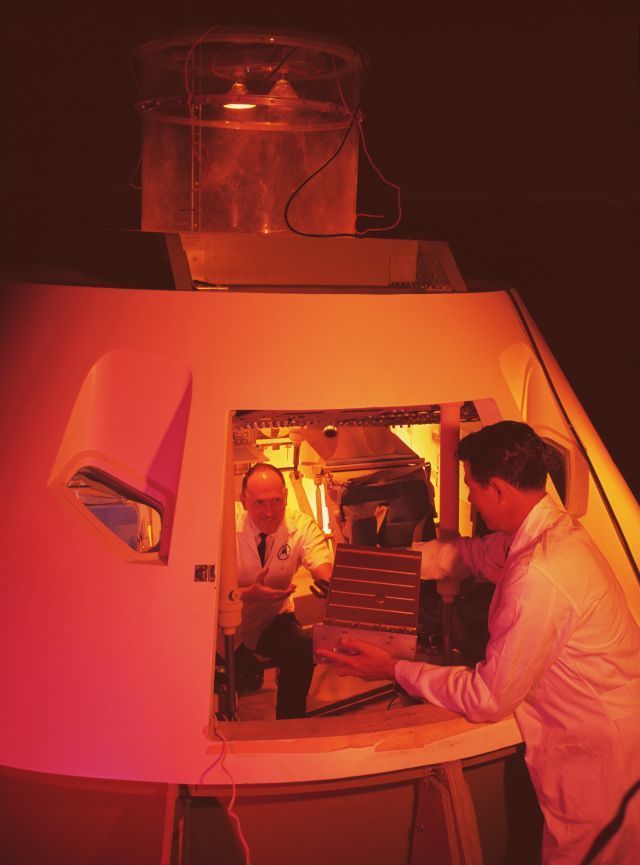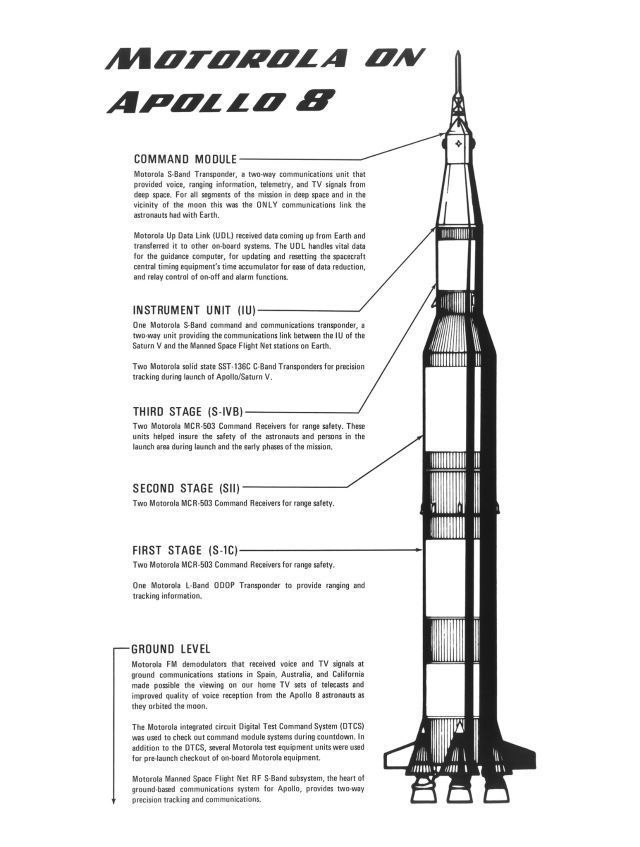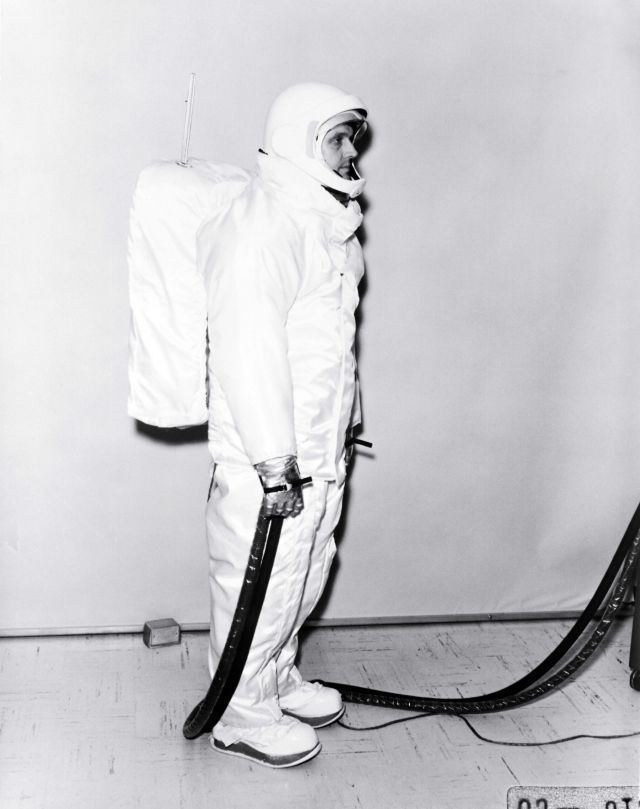July 16, 2019
T-MINUS 4 DAYS: Motorola Equipment Used In Apollo 11 Mission

In honor of the 50th anniversary of the first manned moon landing, we are revisiting our archives to reflect on our history of “firsts” and how it has shaped our commitment to innovation through mission-critical communications.
On July 16, 1969, three astronauts entered lunar orbit. Four days later, they successfully landed on the moon and returned to Earth, setting the stage for future space exploration.
Here are Motorola’s most notable contributions toward the success of the Apollo 11 mission:
Motorola S-Band Transponder – Aboard the command module, the transponder provided the only means of vital communication including voice, telemetry, tracking and television signals between the command module and central command.
Motorola S-Band Transceiver – Located in the Apollo 11’s lunar excursion module (LEM), the transceiver provided radio signals to three FM demodulators, confirming a successful lunar surface touchdown.
Motorola Up-Data Link – This unit received and distributed critical computer, time-setting data and signals from Earth to onboard systems for astronaut use.
Additional equipment Motorola provided for the mission:
Motorola Semiconductors – Transistors and integrated circuits produced by Motorola’s Semiconductor Products Division helped to eliminate thousands of pounds of weight and provided the precision, performance and reliability necessary for space flight.
Motorola MCR-503 Command Receivers; L-Band ODAP Transponder – Equipment used in the three stages of the Saturn V rocket, provided tracking and range safety for astronauts and persons in the launch area during launch and early phases of the mission.
Motorola S-Band Transponder; C-Band Transponders – Located on the Instrument Unit (IU) of the Saturn V rocket, both transponders provided communications between the IU and the Manned Space Flight Net stations on Earth and precision tracking during launch.
Motorola Backpack Antenna – A small antenna attached to the astronauts’ backpacks relayed their words to the lunar module where the LEM transceiver assisted in relaying them to Earth.
Motorola FM Demodulators – Circuits that were used at receiving stations to relay the television pictures and radio broadcasts that provided the world with what the astronauts saw on the moon.
Motorola Digital Test Command System (DTCS) – Ground equipment used to check out command module systems during countdown.
Motorola Manned Space Flight Net RF S-Band Subsystem – The heart of ground-based communications for Apollo and provided two-way precision tracking and communications.
On July 16, 1969, three astronauts entered lunar orbit. Four days later, they successfully landed on the moon and returned to Earth, setting the stage for future space exploration.
Here are Motorola’s most notable contributions toward the success of the Apollo 11 mission:
Motorola S-Band Transponder – Aboard the command module, the transponder provided the only means of vital communication including voice, telemetry, tracking and television signals between the command module and central command.
Motorola S-Band Transceiver – Located in the Apollo 11’s lunar excursion module (LEM), the transceiver provided radio signals to three FM demodulators, confirming a successful lunar surface touchdown.
Motorola Up-Data Link – This unit received and distributed critical computer, time-setting data and signals from Earth to onboard systems for astronaut use.
Additional equipment Motorola provided for the mission:
Motorola Semiconductors – Transistors and integrated circuits produced by Motorola’s Semiconductor Products Division helped to eliminate thousands of pounds of weight and provided the precision, performance and reliability necessary for space flight.
Motorola MCR-503 Command Receivers; L-Band ODAP Transponder – Equipment used in the three stages of the Saturn V rocket, provided tracking and range safety for astronauts and persons in the launch area during launch and early phases of the mission.
Motorola S-Band Transponder; C-Band Transponders – Located on the Instrument Unit (IU) of the Saturn V rocket, both transponders provided communications between the IU and the Manned Space Flight Net stations on Earth and precision tracking during launch.
Motorola Backpack Antenna – A small antenna attached to the astronauts’ backpacks relayed their words to the lunar module where the LEM transceiver assisted in relaying them to Earth.
Motorola FM Demodulators – Circuits that were used at receiving stations to relay the television pictures and radio broadcasts that provided the world with what the astronauts saw on the moon.
Motorola Digital Test Command System (DTCS) – Ground equipment used to check out command module systems during countdown.
Motorola Manned Space Flight Net RF S-Band Subsystem – The heart of ground-based communications for Apollo and provided two-way precision tracking and communications.


